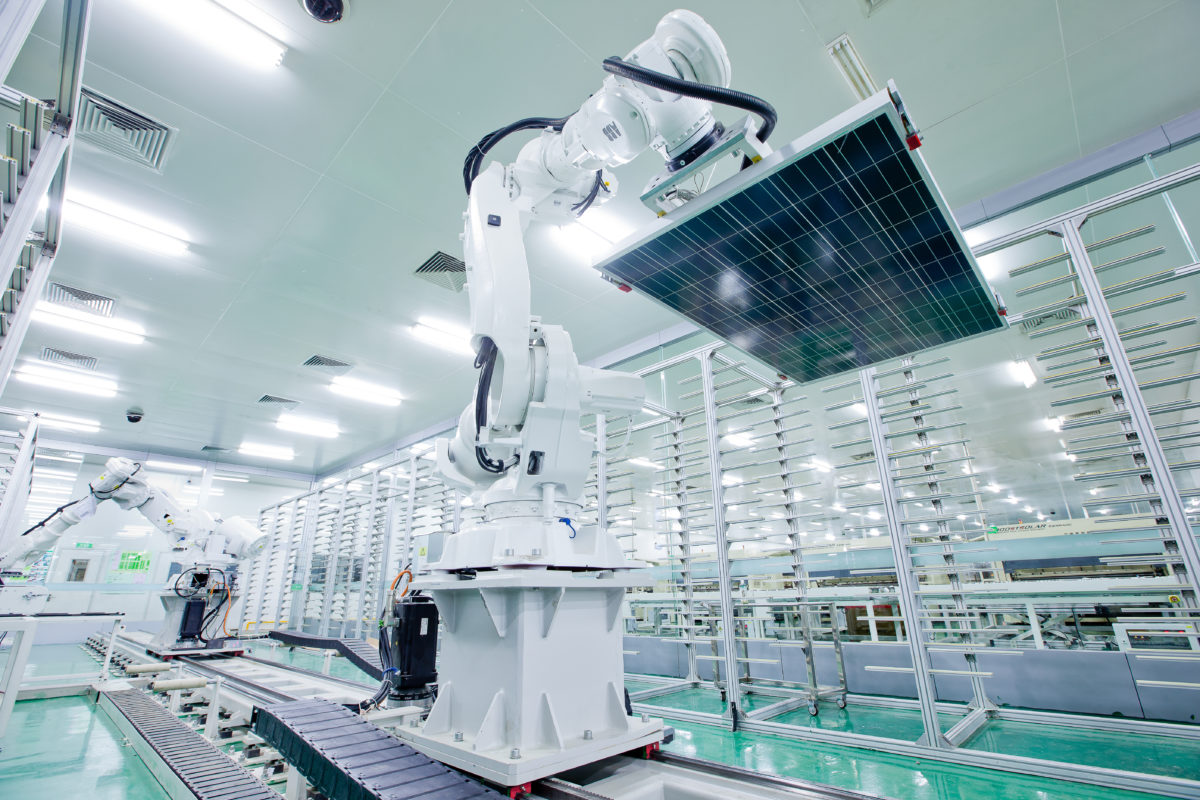Chinese solar manufacturer, JinkoSolar Holding Co., Ltd has posted revenues of CNY 6.06 billion (US$915.9 million) in the second quarter of this year, down 23.5% from the same period a year earlier. Shipments, instead, dropped 3.1% year-on-year, from 2,884 MW to 2,794 MW.
The company attributed the revenue drop to declining average selling prices (ASPs) of PV panels and the above-mentioned slight shipment decrease. Operating result, however, improved year-on-year, from CNY 85.3 million ($12.4 million) to CNY 94.6 million ($14.3 million).
Operating expenses also improved, thanks to a 15% decrease in shipping costs, from CNY 749.5 million in the second quarter of 2017, to CNY 633 million ($95.7 million) in the latest quarter. Quarterly net profit, meanwhile, has more than doubled year-on-year, from CNY 47.4 million to CNY 99 million ($15 million).
Jinko stressed that the recent changes in the solar energy policy issued by the Chinese government will not affect its performance, at least in the short-term. “We believe these new policies will have a relatively limited impact on our operations over the short-term and are optimistic about our future prospects,” the company stated, without providing more details on the long-term perspective.
As a result of this near term confidence, the company maintains its shipment guidance of between 11.5 GW to 12 GW for the full fiscal year, which it released in March, when it published its 2017 financial results.
As for the third quarter, Jinko forecasts module shipments of between 2.8 GW to 3 GW. No guidance was given for expected revenue or profits, however. “We already have good visibility of our order book for the entire year which is predominantly made up of overseas orders to markets which are growing rapidly and will generate significant opportunities ahead,” it said.
Popular content
Increased efficiency
JinkoSolar said it has worked on some of its production processes during the latest quarter, which are expected to result in improved wafer efficiency and a reduction in both oxygen content and light induced degradation.
The manufacturer further increased its capacity for mono PERC modules, which is expected to reach 4.2 GW by the end of this year, and invested more in N-type technology. The company’s total production capacity as of the end of June, was 9 GW for wafers, 5 GW for cells and 9 GW for modules.
“Despite some industry headwinds, we believe those challenges also create opportunities for us to further strengthen our position as a global leader in the solar PV industry,” the company said in its financial statement. It believes, in fact, that these headwinds will lead to the closing of inefficient manufacturers, while stimulating global solar demand, due to lower PV module prices.
This content is protected by copyright and may not be reused. If you want to cooperate with us and would like to reuse some of our content, please contact: editors@pv-magazine.com.



By submitting this form you agree to pv magazine using your data for the purposes of publishing your comment.
Your personal data will only be disclosed or otherwise transmitted to third parties for the purposes of spam filtering or if this is necessary for technical maintenance of the website. Any other transfer to third parties will not take place unless this is justified on the basis of applicable data protection regulations or if pv magazine is legally obliged to do so.
You may revoke this consent at any time with effect for the future, in which case your personal data will be deleted immediately. Otherwise, your data will be deleted if pv magazine has processed your request or the purpose of data storage is fulfilled.
Further information on data privacy can be found in our Data Protection Policy.